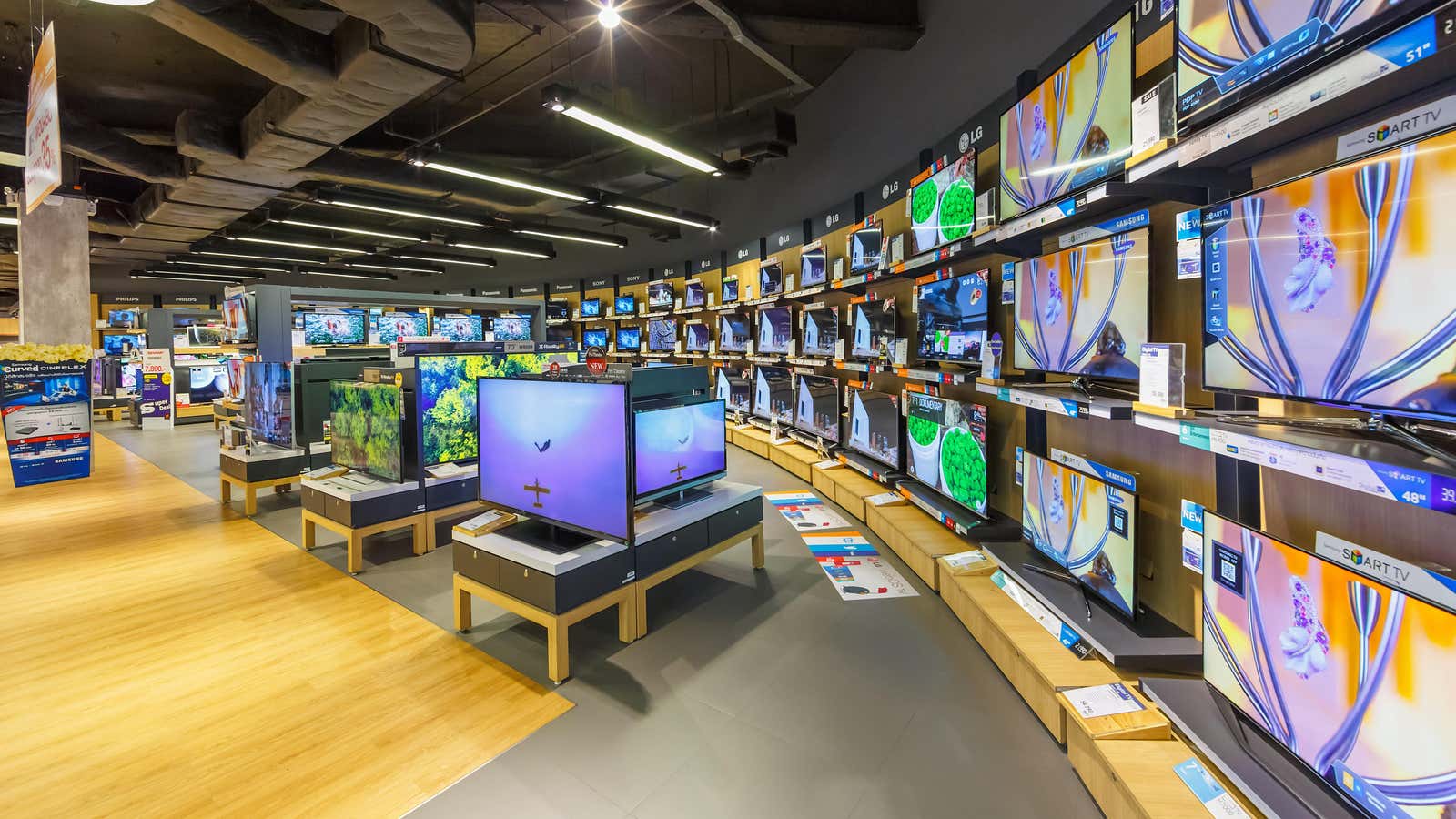Don’t Be Fooled by Buying a Crappy TV

We’re in the middle of the holiday shopping season, and one of the most popular items people often want to buy this time of year is a new TV. Unfortunately, the manufacturers are one step ahead of you, so the “best deal” you were hoping for might not actually be that great. Here are ways to shop smart and avoid falling prey to the common pitfalls of ending up with a TV lemon.
These are the price ranges for a good TV deal
First, it’s important to know if a TV is really selling for a good price based on its size, picture quality, and brand. Here are the price ranges to look for and what to expect from each:
- Budget TVs $150 to $300 : This is the range where you’ll find many TV deals advertised at stores like Walmart, Target, and Best Buy. You can get decent 4K UHD, LED, or QLED 55-inch smart TVs in this category from brands like TCL, Hisense, Vizio, and Amazon Fire TV. While these brands are considered “budget” TVs, they offer good value for the price. Unless you’re a serious gamer or techie, you probably won’t be able to find much of a difference with better TVs than what’s on offer here.
- TVs with a diagonal of 55 to 75 inches from 300 to 650 dollars . If you want a bigger size and are willing to spend a little more, you can find several large 4K smart TVs at this price from the same budget TV brands. They will offer similar features, but you will pay for a larger size.
- OLED TVs $650 and up : A step up from the QLED, UHD, and LED technologies you’ll find on the budget TV lineup, these TVs will offer OLED technology that offers better viewing angles, better gaming experience, and cheaper billing for electricity. You can read more about the difference between OLED and QLED technologies here .
Beware of “derived models”
Many major retailers list TVs on their websites or in advertisements, but chances are some of them are what Forbes calls “derived models “, i.e. TVs made by manufacturers specifically for holiday deals that will be sold at favorable prices. . This means you really do get what you pay for – a scaled down version of a regular TV that may contain lower quality components and isn’t really the “bargain” it appears to be.
If a deal seems particularly good, look up the model number and manufacturer’s suggested retail price (MSRP) on the manufacturer’s website and compare the MSRP price with the retailer’s “deal” price. If you cannot find the model on the manufacturer’s website, it may be a discontinued model or a derivative that is only distributed to retailers for quick sale. You can also ask the manufacturer’s representative about the model and he should give you more information.
Look for price matching programs and check price history
Retailers like Target and Best Buy offer price match guarantee programs so that if a product drops in price after purchase, you’ll be refunded the difference (Best Buy limits this to a return window). These types of programs are one of the safety nets because you know you will get the best deal for the specific model you want.
You can also use websites or plugins that show product price history to reduce the chances of you falling for overpriced retailers . Camelcamelcamel , for example, can help you find the price history of any product on Amazon – just paste the product link into the search bar and see how the price has changed over time. Amazon may sometimes advertise a product as part of a special holiday sale by increasing the list price of the item and then lowering that list price to show you its new “sale price”. Honey can do the same for price history on certain websites outside of Amazon. Both of these websites can be used as plugins for your browser.